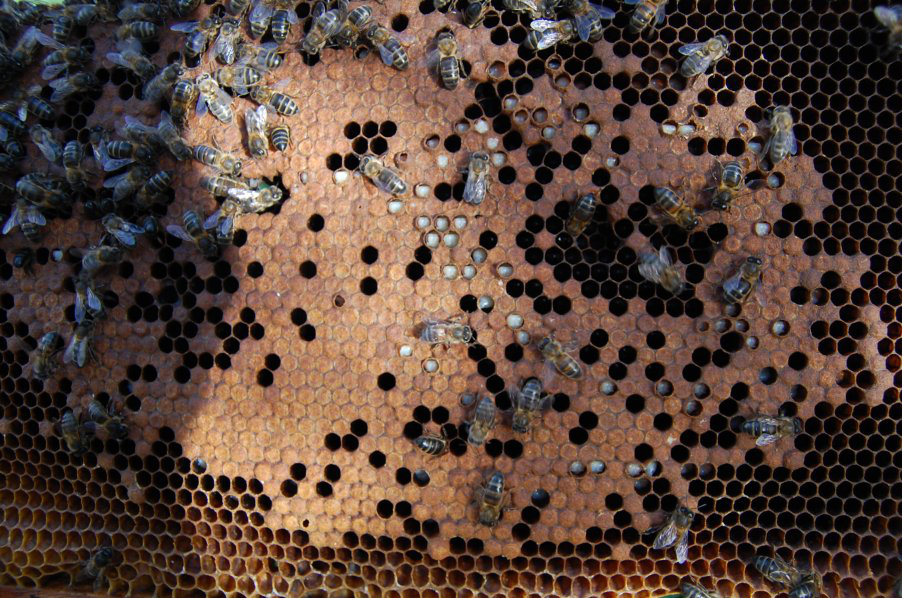Dee comments that the cleaning behavior (we call it the baldheaded brood) depends primarily on the number of bees for the necessary work.

There are priorities, or let’s say a hierarchy. Feeding the brood is more important than cleaning it, for example.
But because the lifetime of the small cell bee is considerably longer (8-12 weeks) than the one of the large cell bees, we have a lot more bees available for the same amount of work.
And lets imagine all their duties for a moment , breeding, feeding, cleaning cells, quick paint everything with propolis, honey, ventilate, nectar, fetch water, pollen, guarding the entrance etc etc.
This means that the small cell bees get started much earlier with removing the varroa from the infected cells. And this is entirely matching our experience. If we observe small and large cell hives by the same mothers, we see bald-headed brood in the former, and none in the latter. That comes only when it is already too late.
Of course we can and must also breed for cleaning, but according our experience, the above-described is far more important and fundamental.
So we can see that we have a much better starting position with small cells and it is then much easier to steer in the right direction with breeding.
Michael Bush made some tests. He bought normal commercial queens of different races and converted part in small cells and the other part on large cells. All small cell hives showed hygienic behavior, of the large-celled bees none did.
The correlations are explained in detail in this video:


